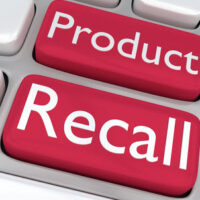Protect Your Children from Defective Clothing

Children face many dangers—falling off furniture or getting struck by another child being two of the more common. But children also face injury from the clothing you buy for them. On February 28, 2018, the Lemur Group recalled its PL Sleep Children’s Sleepwear because the nightgowns failed to meet the government’s flammability standards. As a result, the sleepwear carries an increased risk of burn injuries. Consumers have bought about 1,100 units in the United States and an additional 380 in Canada.
This recall is only the most recent involving children’s clothing. Earlier in the month, a children’s romper was recalled because it posed a choking hazard, and an infant bodysuit was recalled for the same reason. When the unthinkable happens and a piece of defective clothing injures your child, you might be entitled to financial compensation.
Proving a Clothing Defect
We buy clothing expecting it to be safe. After all, the federal government has extensive regulations in place to make sure clothing does not pose a hazard to children. Nevertheless, dangerous clothing enters the stream of commerce regularly. As the PL Sleepwear situation shows, some clothing flatly fails to satisfy government safety standards. Other articles might pose a danger in a way that is hard to anticipate.
Regardless of how the article is defective, manufacturers and others are strictly liable when defective products injure consumers. Clothing can be defective in a few ways:
-
Design defect. Something about how the article has been designed renders it unreasonably dangerous. For example, the collar on a baby bodysuit might be too small, posing a choking hazard.
-
Manufacturing defect. There might not be anything wrong with the design. However, the way the individual article was made renders it unreasonably dangerous. For example, poorly sewn buttons might pop off, which your child might swallow.
-
Inadequate warnings. A product can also be unreasonably dangerous if it does not come with adequate safety warnings or instructions.
Each situation is different, but our Daytona Beach personal injury lawyers are experienced at identifying clothing defects and then explaining them to juries.
Who Can You Hold Responsible?
If you or a loved one has been injured by defective clothing, you can sue anyone who pushed the product along the chain of distribution, for example:
- Manufacturers
- Wholesalers
- Suppliers
- Distributors
- Retailers
Collect Evidence
To receive compensation, you will need to prove that the clothing was unreasonably dangerous and that it caused your child’s injuries. To that end, you should preserve all helpful evidence, including:
- The article of clothing
- Any packaging you still have
- Medical records
- Medical bills
- Your own memories about what happened the day your child was injured
- If your child is old enough, then their own memories
Show this evidence to your personal injury lawyer, who will find it helpful when deciding whether you have a valid legal claim.
Contact a Personal Injury Lawyer Today
When children are injured, worried parents might feel helpless. Take control of the situation by reaching out to a Daytona Beach attorney to discuss your case. At Bundza & Rodriguez, we have helped many families receive financial compensation for injuries caused by a defective product. Call us today toll-free at 866-785-5470.
Resource:
cpsc.gov/Recalls?page=2

